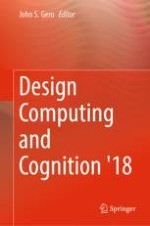2019 | OriginalPaper | Chapter
Side-by-Side Human–Computer Design Using a Tangible User Interface
Authors : Matthew V. Law, Nikhil Dhawan, Hyunseung Bang, So-Yeon Yoon, Daniel Selva, Guy Hoffman
Published in: Design Computing and Cognition '18
Publisher: Springer International Publishing
Activate our intelligent search to find suitable subject content or patents.
Select sections of text to find matching patents with Artificial Intelligence. powered by
Select sections of text to find additional relevant content using AI-assisted search. powered by
